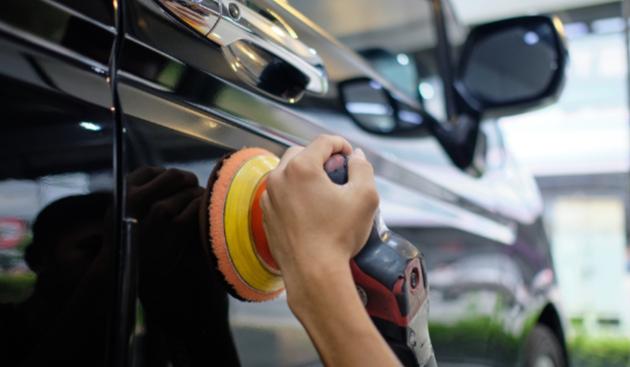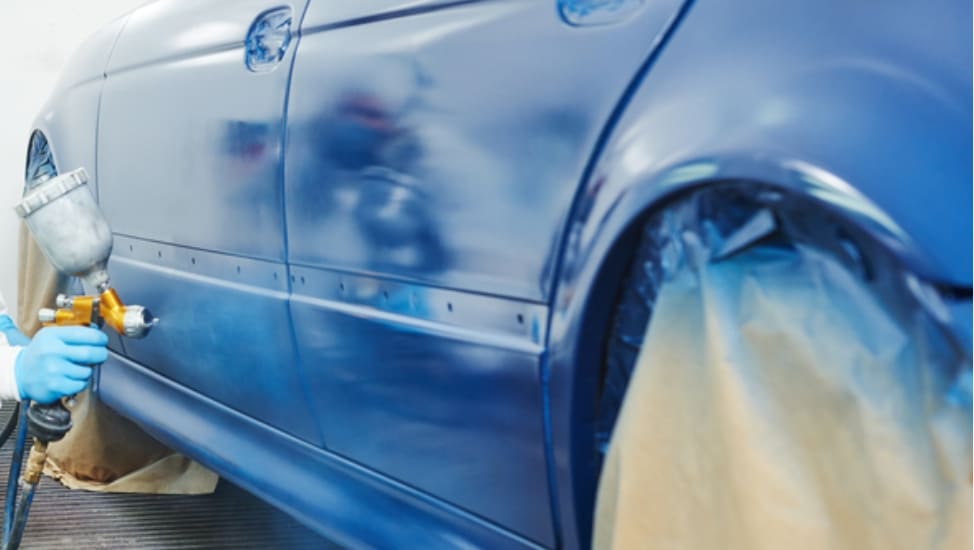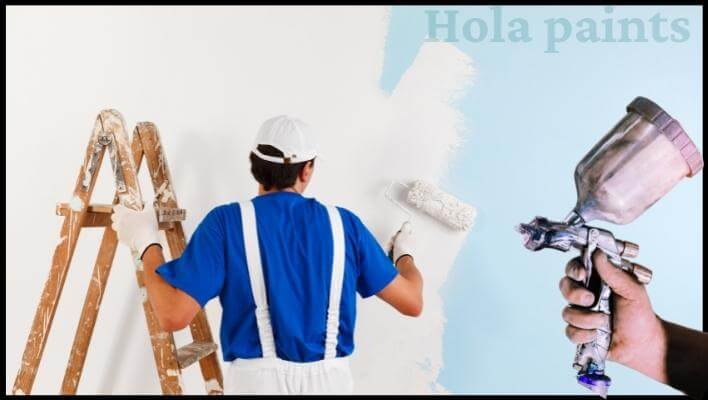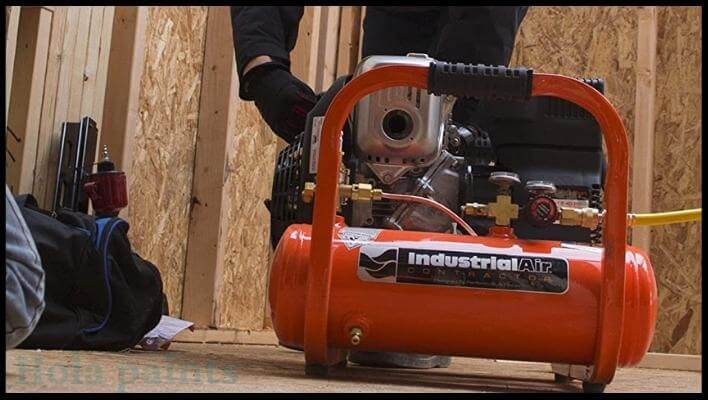The paint correction process is for those looking to restore gloss, remove scratches, swirl marks, oxidation, and other imperfections from a car’s paint surface. A number of factors can affect the cost of paint correction, including the condition of the paint, the size of the vehicle, and the type of correction required such as single-stage polish or multi-stage correction. Paint correction cost is not fixed, as each detailer charges according to the painting requirements.
The process of paint correction usually involves polishers and compounds that are used to gently buff and polish the paint. It can take several hours or even days to complete the process.

Table of Contents
- How Much Does Paint Correction Cost?
- Full paint correction Cost Strategy
- Paint correction steps
- 1-Step Paint Correction- Single Step Paint Enhancement
- 2-Step Paint Correction
- 3-step paint correction
- Car Paint Correction Steps
- Car Wash & Hand wash
- Paint Correction Polish / Buffing:
- Protection
- Paint Correction vs Buffing
- Paint correction and ceramic coating
- Is paint correction the same as ceramic coating?
- A ceramic coating
- Sealant
- Wax
- How long does it take to paint a car?
- Professional Auto Body Shop:
- DIY Project:
- Quick Car Paint Jobs:
- Custom or Specialized Car Paint:
- How do you protect paint after polishing?
- FAQs On Auto Paint Correction
- How much is paint correction?
- Does paint correction fix scratches?
- Is a paint correction worth it?
- Does paint correction last?
- Final words On Paint Correction cost:
How Much Does Paint Correction Cost?
A paint correction service can cost between $ 500 and $ 3,000. It is worthwhile to invest in paint correction for your car to make it look better and save you money. Keeping the paint in good condition can help prevent future damage to the vehicle.
It is essential to take into account the condition of the paint when calculating the cost of paint correction. There is likely to be a lower paint correction price if the paint on a vehicle has only a few minor scratches or swirl marks.
A larger vehicle will require more time and effort to fix, ultimately increasing the cost. Additionally, the types of corrections can also affect the cost of paint correction. Therefore, the right way to estimate the cost of painting your vehicle is to get a quote from a well-known body shop.
Proper paint correction stages are costly, according to most paint correction specialists. If you are offering paint correction services, it can be challenging to determine the paint correction price. Here is a detailed guide to get a better understanding of how much paint correction on a car costs required, so you can maximize your profits.
Bonus Resource: Take a look at the pricing for Maaco car painting.
Full paint correction Cost Strategy

A few factors must be considered when calculating paint correction costs. These factors include the size and condition of the vehicle, the degree of correction needed, as well as the cost of each product and labor.
You should conduct market research to understand the prices charged by other service providers in your area, and set your own competitive prices. Business owners often offer different pricing options for their paint correction services, including basic, intermediate, and advanced corrections.
In addition, it’s important to clearly communicate the cost of any additional services you may offer, like ceramic coatings or waxes.
Paint correction steps
1-Step Paint Correction- Single Step Paint Enhancement
Stage 1 paint correction is an entry-level service that is best suited to paint that is already in fairly good condition with slight imperfections. A paint specialist removes about 40%-70% of swirls and scratches during this process.
Polishing is done in one step using only one type of polish and pad combination. Afterwards, we apply a paint sealant that will remain effective for a long time.
It usually takes 4-5 hours to complete this process, depending on the vehicle’s size, condition, and type of equipment. The average stage 1 paint correction cost is $400 or more.
2-Step Paint Correction
In stage 2 paint correction, your paint specialist will be looking to remove 70%-90% of mild swirl marks, scratches, and minor water etching throughout the vehicle. Paint defects or major imperfections are first removed with an abrasive polish and then refined with a finishing polish and pad.
Upon completion of the correction process, a wax or sealant is applied that lasts between 4-6 months. For this process, consistent labor of 8-20 hours is required. The stage 2 paint correction cost ranges from $600 – $1000.
3-step paint correction
In the stage 3 paint correction process, all paint correction steps (including bumper repainting, rim or wheel painting) are covered. If we compare it to the other two types of paint correction, stage 3 requires more labor. During this process, your paint specialist will attempt to remove up to 95-98% of all deep swirl marks and medium to heavy scratches from your vehicle.
Next, a polish and pad are used to refine, followed by a ceramic sealant that lasts for 6 months. As a result, you’ll have a gorgeously smooth finish that shines brilliantly without damaging your paint.
The entire process usually takes 30 hours or more from start to finish. On average, the 3 step paint correction cost can vary from $1000 to $3000.
Car Paint Correction Steps
Taking care of your car before it loses its clear coat will definitely result in a better outcome than having to repaint your car from scratch. But if you don’t know how to do it well, then it’s hard to care.
Paint correction requires multiple steps of polishing. Therefore, I am providing you with additional information about what you need for your car paint correction.
Car Wash & Hand wash
The vehicle must be thoroughly washed to remove dirt, grime, and debris. You can clean the exterior of your car using a warm water, wash mitt, sponge, and car washing shampoo by hand.
A clay bar removes any residue left after washing the paint. Clay bars are gently worked over paint in a back-and-forth motion to get rid of particles.
For the most effective results, dry the car before applying the correction compound.
Paint Correction Polish / Buffing:
An electric buffer removes light scratches and swirl marks from your paint. This process is typically carried out with a rotary or dual-action polisher. The polishing step can also be completed with a rotary machine.
Protection
When the paint is polished and finished, it must be protected with a sealant or wax. As a result, it will preserve the paint’s shine and clarity and help prevent damage in the future.
Paint Correction vs Buffing
Corrections and Buffing are ways of improving a car’s paint by using specialized tools and products. However, there are some key differences between the two terms:
Paint correction: Paint correction treats a wide range of paint imperfections including removing oxidation, fine scratches, swirl marks, and more. The process usually involves washing, claying, compounding, polishing, and sealing. It can take several hours to correct paint, which is often performed by professionals.
Buffing: The process of buffing can be done by hand or with a machine which involves applying a compound or polish to the paint. Buffing is usually the last step in paint correction, and it is used to remove any remaining fine scratches. Also it enhances the paint’s shine and clear appearance.
Paint correction and ceramic coating
A combination of paint correction and ceramic coating will yield the best results. There are many auto detailing shops that only offer paint correction with ceramic coating. However, if you would like to save money, you can also choose another form of protection. Ceramic coatings, sealants, or waxes can be used to create a barrier on painted surfaces.
Is paint correction the same as ceramic coating?
With paint correction, you should protect your vehicle from things that could cause dirt, hazing, and scratches. By doing this, you will also be able to restore the color of the paint to its original state.
Paint correction can be maintained by regularly washing. In addition, you should park your car in a shaded area or in the garage to reduce UV ray exposure.
A ceramic coating
Most people prefer ceramic coatings for easier maintenance of their vehicles. Ceramic coatings are liquid polymers that are applied to the paint’s external surface. It forms a hard and durable protective layer over the paint.
A ceramic coating will protect your clear coat and enhance the paint’s shine for a long time to come. Improper application of ceramic coating can damage the paint, so it should only be applied by trained professionals.
You can expect to pay between $500 and $3000 for a professional ceramic coating installation. Ceramic coating lasts for two to five years on average.
Sealant
When a vehicle’s paint has been polished or corrected, then sealants protect it from oxidation. Like ceramic coatings, it creates a barrier on top of the paint to help it resist UV rays, road grime, and bird droppings.
Sealants can improve the color and shine of paint, making it more vibrant and shiny. Sealants are included in paint correction services that vary in cost based on vehicle size and degree of correction. However, they are not as effective as ceramic coatings, but they are still a viable option for those looking to save on ceramic installation costs. Quality sealants typically last 6-8 months.
Wax
Wax is used in paint correction to protect a vehicle’s paint. It helps protect the paint from environmental elements such as UV rays, dirt, and moisture.
As an added benefit, it can make the paint look shiny and new by adding a glossy finish. In comparison to ceramic coatings or sealants, it provides less protection on top of your paint.
Note: For those interested in marine maintenance costs, understanding the cost to paint a boat is just as important as evaluating paint correction expenses for vehicles.
How long does it take to paint a car?
The duration required to paint a car can vary widely based on several factors, such as the vehicle’s size, the complexity of the paint job, and whether it is done professionally or as a do-it-yourself project. Here’s a general overview:
Professional Auto Body Shop:
When you entrust your car to a professional auto body shop, the process can take anywhere from a few days to a couple of weeks. The timeline involves several stages, which include preparation, priming, the actual painting, and ensuring adequate drying.
More intricate paint jobs, such as custom designs or multiple coats, may extend the timeline.
DIY Project:
If you decide to undertake the painting yourself, the duration can be longer, particularly if you lack experience. The preparation phase, involving tasks like sanding, priming, and masking, can occupy several days. The actual painting process may span a day or more, depending on factors like the number of coats and required drying intervals. It’s imperative to meticulously follow all instructions to achieve a high-quality finish.
Quick Car Paint Jobs:
Certain auto body shops offer expedited painting services, often completing them in a day or less. These services are typically geared towards basic paint jobs with minimal preparation.
Custom or Specialized Car Paint:
For custom or specialized paint jobs with intricate designs or special effects, the time required can be significantly longer. This may involve additional time for designing, planning, and meticulous detailing.
How do you protect paint after polishing?
Protecting paint after polishing can be done in several ways:
- Seal the paint with wax or sealant. They will create the barrier and protect the paint from dirt and contaminants.
- You can apply other paint coatings, including ceramic coatings that add an additional layer of protection.
- Keep your paint in good condition by inspecting it regularly and taking care of any problems quick.
FAQs On Auto Paint Correction
How much is paint correction?
The cost of paint correction depends on a number of factors, including the vehicle’s size, the paint’s condition, and the type of service you require. There is an average range of $500 to $3000 for paint correction services. You can get an estimate from a professional detailer or body shop to get an accurate estimate.
Does paint correction fix scratches?
Yes, it is a safe and effective way to permanently remove surface scratches, swirl marks, hazing, and other imperfections from your car’s paint. A very reliable method that will enable you to restore the original color of your car.
Is a paint correction worth it?
Certainly. Paint correction can restore the appearance of your car if it has minor scratches, deep scratches, etchings, or swirl marks. It is very important to consult a professional detailer about the condition of your vehicle’s paint. A consultant will help you decide whether paint correction is the right choice for you.
Does paint correction last?
Paint corrections can last for several years depending on several factors, including the products used, the equipment used, the technician’s skill, and the condition of the paint. When performed correctly, a paint correction generally lasts for two to three years. However, exposure to the elements, environmental factors such as bird droppings, and other contaminants, as well as poor washing and maintenance practices can reduce the longevity of your vehicle’s paint.
Therefore, if you want your car’s paint correction results to remain effective, keep it clean and avoid harsh chemicals while washing it. Furthermore, a professional detailer can prolong the impact of paint correction with weekly maintenance and touch-ups.
Final words On Paint Correction cost:
An auto paint correction procedure can improve the shine and condition of the paint on your car. However, the cost of paint correction can vary depending on the condition of the paint, the size of the vehicle, and the type of correction that is needed. For this reason, it is important to research, compare paint correction prices from different providers. Then, find a reputable professional who can provide a detailed estimate and deliver quality work.
I always recommend asking a detailer for some of their previous work before hiring them, specifically the paint correction process. So you’ll know if their quality meets your expectations. It is important to remember that paint correction is an investment in your car that will increase its value and longevity.

Martina Hitchcock
Martina Hitchcock is a versatile author with expertise in different fields. As a paint sprayer expert, she has in-depth knowledge of paint spraying techniques, tools, and equipment. Martina is also an experienced home remodeler who has worked on various projects, including kitchen and bathroom renovations, flooring installations, and room additions. Her knowledge of home improvement and remodeling is extensive, and she enjoys sharing her insights and tips with readers. You can follow her on Facebook.


